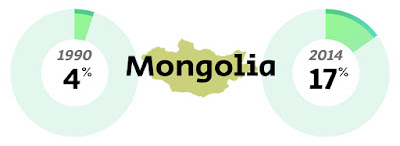I was speaking with a good friend who was lamenting how much kids today are overly sensitive and "snowflakes" and too easily offended. He doesn't believe in "microaggressions" and thinks a lot of comments today are blown out of proportion. This person is by all accounts very tolerant and kind, and probably not someone who would ever actually offend all those sensitive snowflakes.
This isn't an uncommon point of view. And it's logical. Particularly if you grew up in an earlier time, it seems weird that a lot of our public discourse and media focus has suddenly shifted to picking apart words and endless offend-and-apologize cycles. Aren't there more important things to focus on?
But I think this point of view is based on a misunderstanding, and one that the other side [mine] hasn't done a good job of communicating - if they even understand it themselves.
This misunderstanding is that we shouldn't fight offensive comments because they hurt people and are the worst evil in and of themselves, but because they are the underlying root of the worst evils. Which means that fighting them is a way - perhaps the only long-term way - to fight bigger things like hate crimes, domestic violence, rape, and murder based on racism and sexism.
Many of the people fighting these offensive comments and microaggressions understand this concept, but many others are just offended personally as well. We should fight them for both reasons.
A problem that arose in recent decades with the exposing of the worst horrors of racism and sexism is that it let society group the people who committed those horrors as officially "racist" or "sexist". Meaning, no one else is. Now, we all instinctively view people as either "racist" or not, and either "sexist" or not. This isn't helpful, because it allows us to excuse ourselves into the "not" category as long as we aren't actively raping and killing people. Instead, we are all, any of us that have been raised on this planet, racist and sexist to some degree. Unfortunately, this makes rooting out the problem much harder.
I created the below list, which I dramatically call the Continuum of Hate. It's a spectrum with five categories of racist/sexist things, ranging from mild at the top to horrible at the bottom. You could imagine it horizontally, too, if you want.Continuum of hate
- Unconscious bias
- over-emphasis of differences
- gender assumptions of our language
- assumptions of gender differences
- internal stereotypes
- snap judgements
- Microaggression
- comments
- interruptions
- preferences
- jokes
- exclusion
- Discrimination
- strict gender roles
- hiring discrimination
- limited opportunities
- voting rights
- active hatred
- Harassment
- slurs
- graffiti/vandalism
- catcalling/street harassment
- sexual harassment
- police brutality
- Violence
- domestic violence
- sexual assault
- rape
- slavery
- murder, lynching
So instead of an underlying id of "racism" or "sexism" in people's minds that then comes out in all of those above things, the items at the beginning/top of the spectrum are the causes themselves of the things at the end/bottom.
Children start with no bias and no assumptions. All of the unconscious bias of adults, media, and society that kids are exposed to leads to continuing that unconscious bias in them. As they're exposed to any item on this list, it can reinforce the hatred. And for every incident of severe violence, there are thousands of small microaggressions, so they're exposed to a lot more of those. Then, depending on the amount of this reinforcement, it can lead to conscious bias, and eventually lead to the other items in the list.
Earlier waves of feminism and racial justice fought to bring awareness to and end the dire items at the end of the spectrum, and they were partially successful. But in addition to continuing that work, the goal of today's current wave of feminism and other social justice movements, often by young people, is not just because they are each offended personally (although they are and should be), but also because they believe that addressing and solving the small things at the top of the list is the only way to eventually end the larger ones.
And the solution to solving the ones at the top is to bring awareness to them, and increase empathy.
---On the other hand, when all is said and done, we don't need to understand all of this theoretical stuff in order to motivate ourselves to use the right words and not offend people. The motivation should be simply: not wanting to hurt people. The only thing it costs you is your word choice. When it's that easy to change something, why would you ever want to knowingly hurt people?























